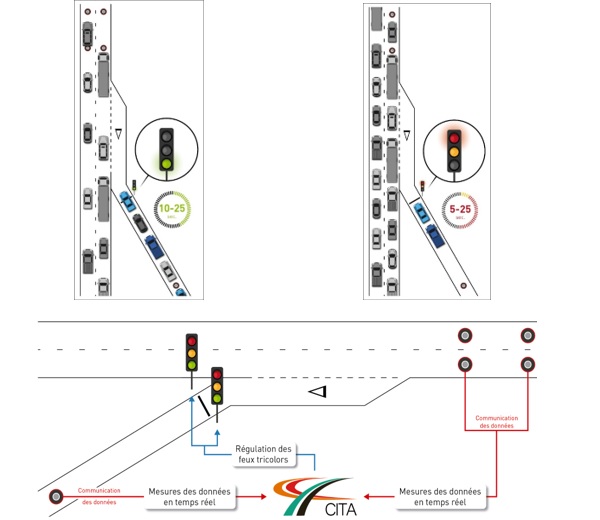
L'Administration des ponts et chaussées (The Bridges and Roads Administration) is launching a pilot project of controlling access to the motorway network (CARA), the test phase of which will begin on Tuesday 27 October 2020 at the Steinfort, Mamer, Bridel and Strassen interchanges of the A6 motorway towards Luxembourg-City.
In heavy traffic, slowdowns quickly form along the current section. Congestion is increasing on the motorway and on access ramps. The CARA regulation system is based on two traffic lights placed on either side of the entrance ramp to the motorway. Using sensors installed on the current section of the motorway and on the slip road, traffic trends are constantly measured and analysed.
When the system detects an increase in traffic on the motorway up to a critical threshold, red light phasing is activated. Vehicles wishing to enter the motorway are detained for a few moments (30 seconds maximum, including an orange phase of 5 seconds) on the entrance ramp via the red lights.
In this way, the traffic on the ramp is injected into the current section in cycles, which disturbs the flow less and should allow better integration of vehicles entering the motorway. When motorway traffic becomes fluid again, i.e. when it falls below the critical threshold, the system deactivates phasing and turns solid green.
Red light durations change depending on actual traffic conditions. The light turns green as soon as the queue exceeds the capacity of the access ramp. If the duration of the calculated green phase is greater than the maximum duration of the green phase (30 seconds), phasing is also interrupted.
The CARA system operates 7 days a week, 24 hours a day. It turns on from a certain rate of traffic density (at any time of the day), otherwise the lights are green.
Similar systems exist in several other countries, including the Netherlands, France and Germany. They have demonstrated positive effects on the flow of traffic








